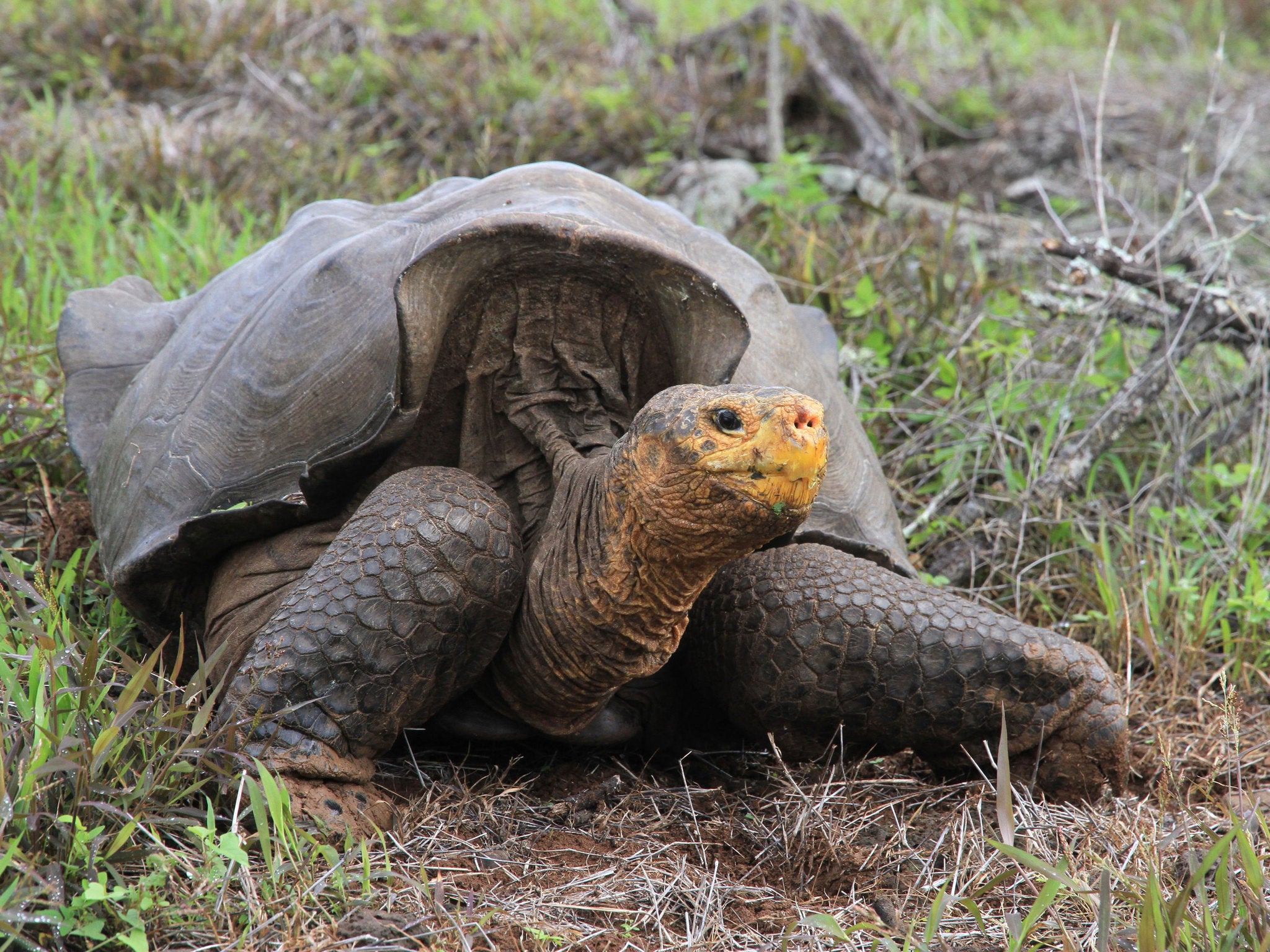Giant tortoise brought back from the brink of extinction
Numbers of the Espanola giant Galapagos tortoises have grown from 15 to over 1,000

Your support helps us to tell the story
From reproductive rights to climate change to Big Tech, The Independent is on the ground when the story is developing. Whether it's investigating the financials of Elon Musk's pro-Trump PAC or producing our latest documentary, 'The A Word', which shines a light on the American women fighting for reproductive rights, we know how important it is to parse out the facts from the messaging.
At such a critical moment in US history, we need reporters on the ground. Your donation allows us to keep sending journalists to speak to both sides of the story.
The Independent is trusted by Americans across the entire political spectrum. And unlike many other quality news outlets, we choose not to lock Americans out of our reporting and analysis with paywalls. We believe quality journalism should be available to everyone, paid for by those who can afford it.
Your support makes all the difference.Conservationists have brought a giant tortoise back from the brink of extinction – 50 years after the population had declined to just 15.
According to a study published in journal PLOS One, the population of the giant tortoises on Español is “secure” following the efforts of conservationists and the Galapagos National Park Service and now numbers more than 1,000.
The recovery of the giant Galapagos tortoise population comes some 40 years after the first captive-bred tortoises were reintroduced to the island.
This was the start of the study, which marked and repeatedly captured the animals for measurement and monitoring purposes by the teams at the Galapagos National Park Service, the Charles Darwin Foundation and visiting scientists.
James P Gibbs, lead author of the study and a professor at the State University of New York’s Science and Forestry, said: “The global population was down to just 15 tortoises by the 1960s. Now there are some 1,000 tortoises breeding on their own. The population is secure.
“It’s a rare example of how biologists and managers can collaborate to recover a species from the brink of extinction,” he said.
Ecological restoration of the island is the next step for the conservationists, as the tortoise population is not likely to increase until the island recovers from the effects of feral goats that were introduced to the island in the 1800s.
The goats, now eradicated, devoured much of the island’s vegetation essential to the tortoises’ diets in a relatively short space of time, which has had lasting effects on the island’s ecosystem.
“This is a miraculous conservation success accomplished by the Galapagos National Park Service, but there is yet more work to fully recover the ecosystem upon which the tortoises and other rare species depend,” Professor Gibbs said.
Join our commenting forum
Join thought-provoking conversations, follow other Independent readers and see their replies
Comments